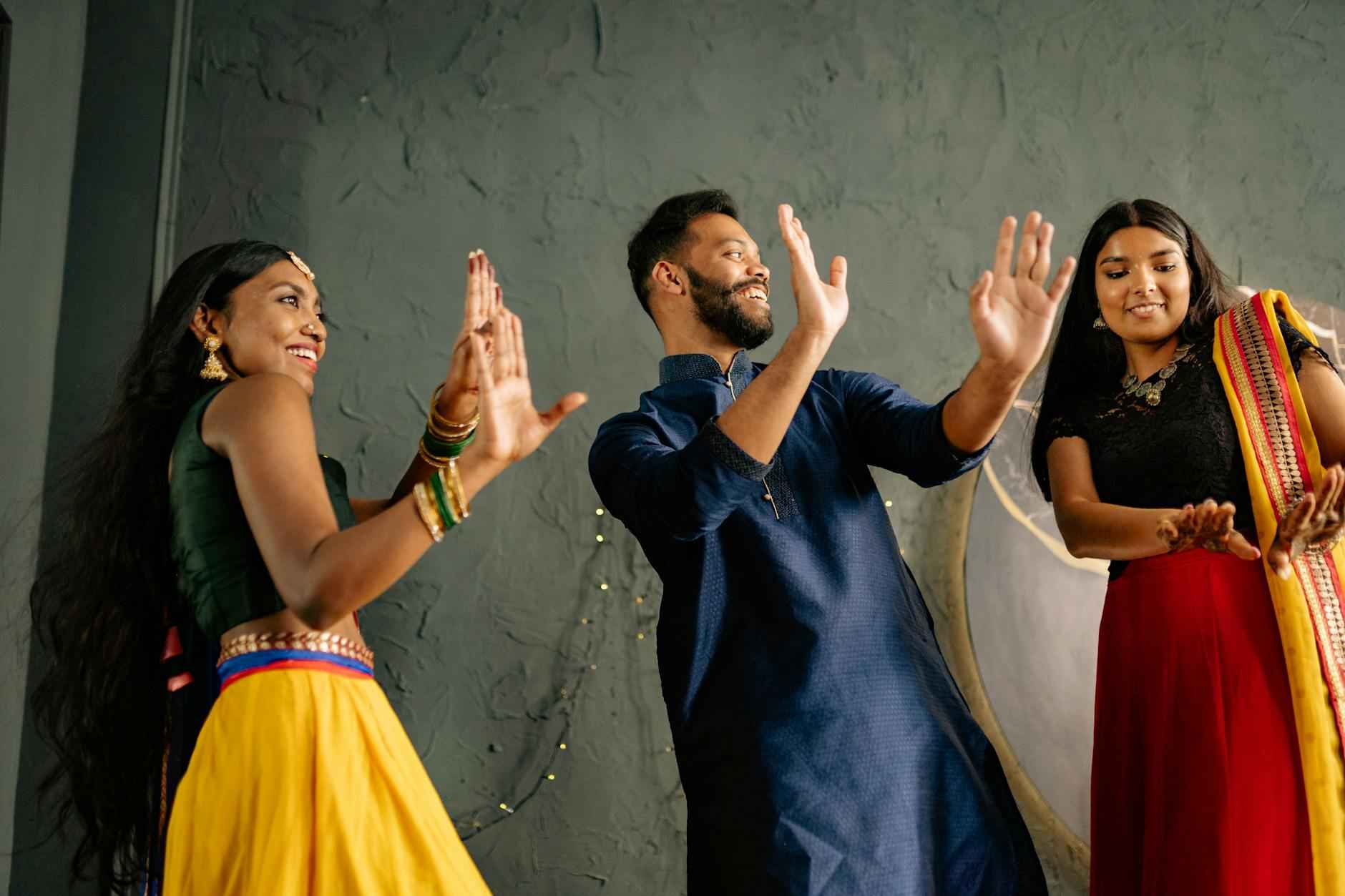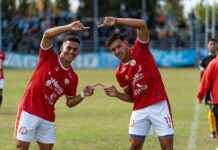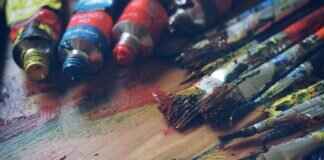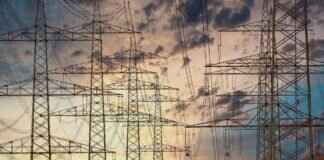This article delves into the vibrant landscape of Indian dance forms flourishing in New York City. It highlights their cultural significance, community engagement, and the various factors contributing to their thriving presence in this multicultural metropolis.
The Cultural Significance of Indian Dance
Indian dance is more than just performance; it is a rich tapestry of history, spirituality, and storytelling. Each dance form carries its own narrative, often rooted in ancient traditions and religious practices. In New York City, these dance forms serve as a vital link between cultures, fostering a deeper understanding and appreciation of Indian heritage among diverse audiences.
Through performances, workshops, and cultural festivals, Indian dance acts as a medium of cultural exchange. It allows individuals from various backgrounds to experience the beauty and complexity of Indian traditions, thus enhancing community ties. The emotional depth and expressive nature of these dances resonate with audiences, creating a shared experience that transcends cultural boundaries.
Popular Indian Dance Styles in NYC
New York City is a melting pot of cultures, and this diversity is reflected in the array of Indian dance styles showcased throughout the city. Some of the most popular forms include Bharatanatyam, Kathak, Odissi, and the energetic Bollywood dance.
- Bharatanatyam: Known for its intricate footwork and expressive gestures, this classical dance from Tamil Nadu captivates audiences with its storytelling.
- Kathak: A narrative dance form from North India, Kathak combines storytelling with rhythmic footwork, often incorporating elements of drama.
- Odissi: Celebrated for its graceful movements, Odissi is one of the oldest classical dance forms, often performed in spiritual settings.
- Bollywood Dance: A modern fusion of various styles, Bollywood dance is vibrant and energetic, appealing to a wide range of audiences.
Bharatanatyam: The Classical Elegance
Bharatanatyam, with its origins in Tamil Nadu, is characterized by its intricate footwork and expressive hand gestures, known as mudras. In New York City, performances often highlight the dance’s rich history and spiritual roots, making it a popular choice for cultural events and festivals.
Training in Bharatanatyam is widely available, with numerous dance schools offering classes for both children and adults. Many of these institutions invite renowned instructors from India to ensure authenticity in their teaching methods, thus preserving the dance form’s traditional essence.
Kathak: The Storyteller’s Dance
Kathak, originating from North India, is recognized for its narrative style and rhythmic footwork. In NYC, it is celebrated for its dynamic performances that blend classical elements with contemporary flair. The storytelling aspect of Kathak captivates audiences, making it a favorite among those seeking a deeper cultural experience.
Odissi: The Dance of Devotion
Odissi is one of the oldest classical dance forms of India, known for its fluid movements and spiritual themes. It has gained a devoted following in NYC, with performances often held in spiritual settings, enhancing its cultural richness. The dance form incorporates themes from Hindu mythology, allowing performers to express their devotion through art.
Bollywood Dance: A Fusion of Styles
Bollywood dance has become immensely popular in New York City, known for its high energy and vibrant music. This dance form combines various styles, making it accessible and appealing to a wide audience. Many dance studios in NYC offer Bollywood dance classes, attracting students of all ages and backgrounds.
Community Engagement and Cultural Exchange
Indian dance forms in NYC actively foster community engagement through workshops, festivals, and performances. These events create spaces for cultural exchange, promoting understanding among diverse populations. Community centers and cultural organizations frequently host workshops, inviting participation from individuals of all backgrounds, thus demystifying Indian dance and encouraging cultural appreciation.
Challenges Faced by Indian Dance Artists
Despite the thriving scene, Indian dance artists in NYC face challenges, including funding and the need for visibility in the mainstream arts community. Addressing these issues is crucial for sustaining this cultural heritage. Securing funding for performances and projects remains a common challenge, making support from cultural organizations vital for artists’ endeavors.
The Future of Indian Dance in NYC
The future of Indian dance in New York City looks promising, with growing interest and participation. Emerging trends, such as the fusion of Indian dance with contemporary styles, are shaping its evolution. Technology also plays a significant role in promoting these art forms, with social media and online platforms making them more accessible to a global audience.
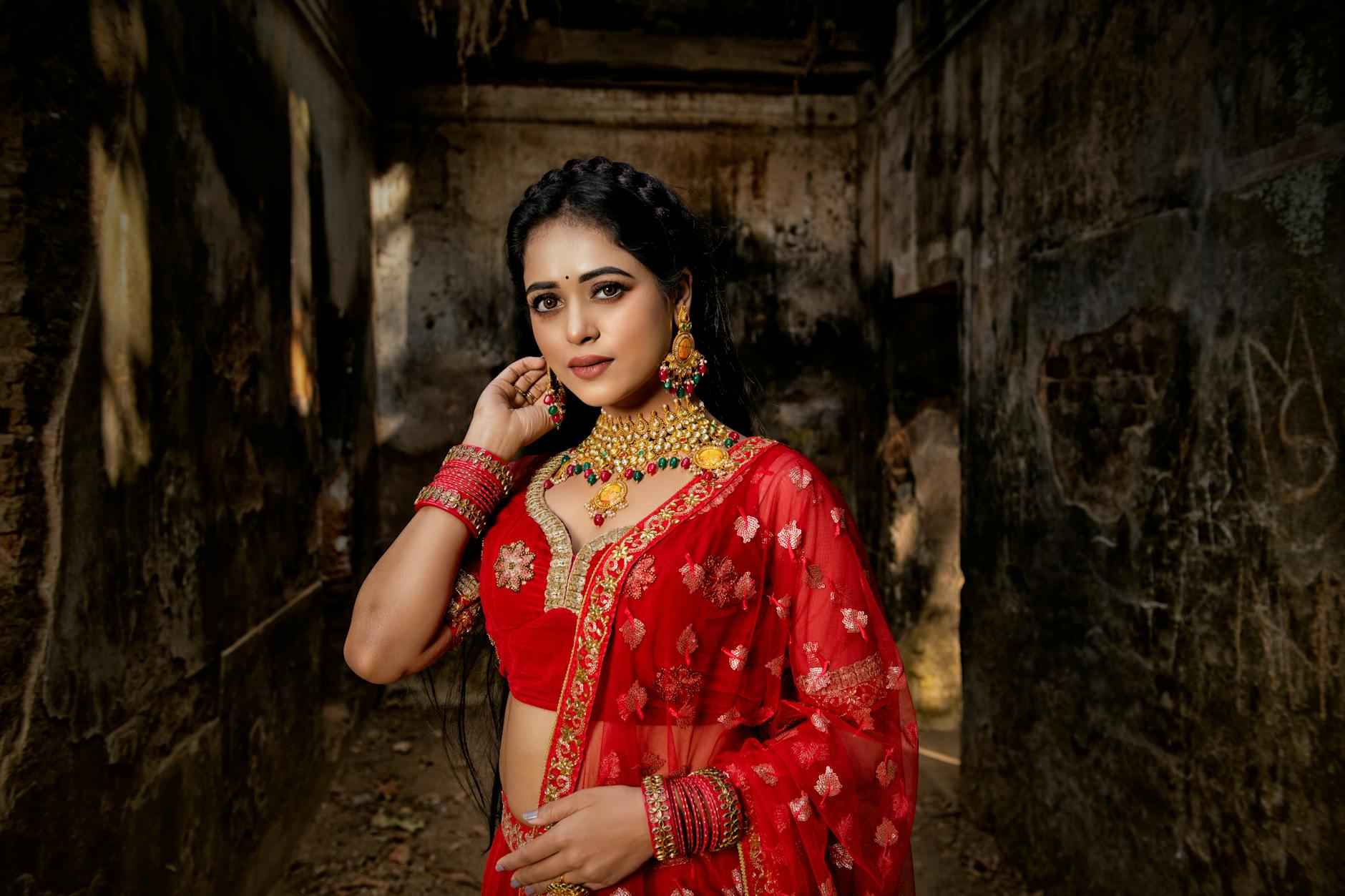
The Cultural Significance of Indian Dance
Indian dance is a vibrant tapestry woven with threads of history, spirituality, and artistic expression. It transcends mere performance, serving as a profound medium for storytelling and cultural preservation. Within the bustling metropolis of New York City, these traditional forms of dance act as a significant bridge between diverse cultural backgrounds, fostering understanding and appreciation among communities.
Rooted in ancient traditions, Indian dance forms such as Bharatanatyam, Kathak, and Odissi not only reflect the rich heritage of India but also embody spiritual narratives that echo through time. Each dance style is imbued with its own unique characteristics and significance, making them essential to the cultural landscape of NYC.
In NYC, Indian dance performances often take place in various venues, from cultural festivals to community centers, allowing these art forms to reach a broad audience. This accessibility is crucial, as it introduces non-Indian audiences to the intricate stories and spiritual themes conveyed through movement, rhythm, and music.
Moreover, Indian dance serves as a powerful tool for cultural exchange. Through workshops and collaborative performances, dancers from different backgrounds come together to explore the nuances of Indian dance, thereby promoting cross-cultural dialogue. For instance, community workshops invite participants to learn traditional dance forms, breaking down barriers and fostering a sense of unity among diverse populations.
The role of Indian dance in NYC extends beyond mere performance. It is a vital part of community identity for many Indian Americans, allowing them to connect with their roots while also sharing their culture with others. This duality enriches the cultural fabric of the city, making it a melting pot of artistic expression.
Furthermore, the spiritual aspect of Indian dance cannot be overlooked. Many dance forms are not only artistic expressions but also acts of devotion. For instance, Odissi is often performed in temples, embodying the worship of deities through graceful movements and intricate poses. This sacred connection adds depth to the performances, inviting audiences to engage with the spiritual dimensions of the art.
As Indian dance continues to thrive in New York City, it faces the challenge of maintaining its authenticity while adapting to contemporary influences. The balance between tradition and innovation is essential for keeping these art forms relevant and engaging for younger generations. Dance schools and cultural organizations play a crucial role in this evolution, offering classes that blend traditional techniques with modern styles.
In conclusion, the cultural significance of Indian dance in NYC is profound. It serves as a bridge between cultures, a means of storytelling, and a form of spiritual expression. As these dance forms continue to flourish, they not only preserve the rich heritage of India but also enrich the diverse cultural landscape of New York City.
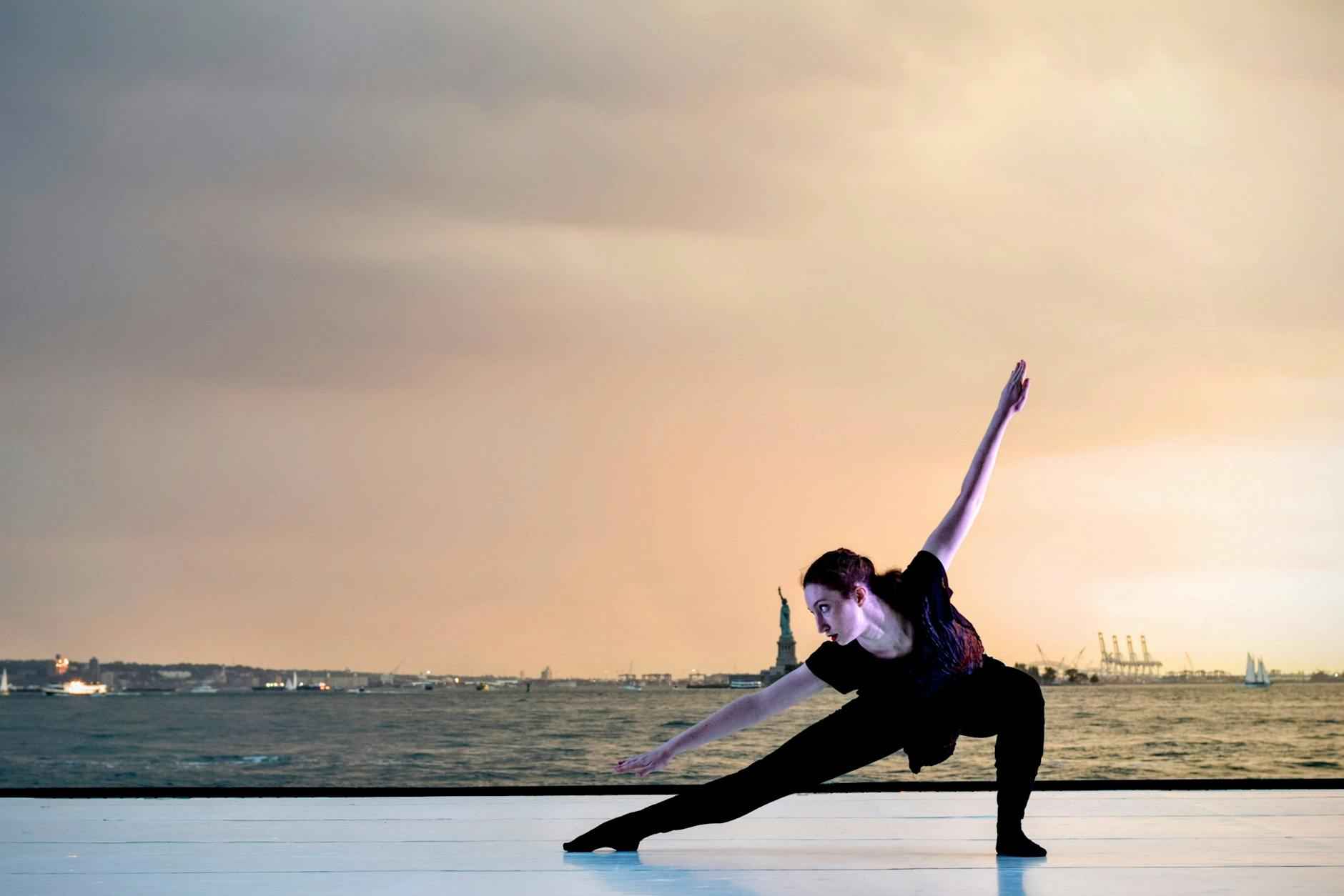
Popular Indian Dance Styles in NYC
New York City is a melting pot of cultures, and one of the most vibrant aspects of this diversity is its rich tapestry of Indian dance styles. The city is home to a plethora of dance forms that not only entertain but also educate audiences about India’s cultural heritage. Among the most notable styles are Bharatanatyam, Kathak, Odissi, and Bollywood dance. Each of these styles brings a unique flavor to the stage, captivating audiences from all walks of life.
Bharatanatyam, one of the oldest classical dance forms of India, hails from the southern state of Tamil Nadu. It is characterized by its intricate footwork, expressive hand gestures, and facial expressions. This dance form is deeply rooted in spirituality and often tells stories from Hindu mythology.
- Storytelling through Mudras: Bharatanatyam uses a series of hand gestures known as mudras to convey emotions and narratives. This aspect of the dance makes it a compelling form of storytelling, engaging the audience on multiple levels.
- Training Opportunities: In NYC, many dance schools offer Bharatanatyam classes, attracting both beginners and seasoned dancers. Renowned instructors from India often visit to provide authentic training, ensuring that the art form is preserved and passed on to future generations.
Kathak is another classical dance form that has found its place in NYC. Originating from North India, it is known for its storytelling elements and intricate footwork. The dance is often performed as a solo act, allowing dancers to showcase their skills and creativity.
- Dynamic Performances: Kathak performances in NYC often blend traditional techniques with contemporary styles, creating a dynamic viewing experience. This fusion attracts diverse audiences, from classical dance enthusiasts to those unfamiliar with Indian culture.
- Community Engagement: Various cultural organizations in NYC host Kathak workshops and performances, fostering community engagement and allowing participants to experience this beautiful art form firsthand.
Odissi, one of the oldest classical dance forms, is celebrated for its graceful movements and spiritual themes. Originating from Odisha, this dance form has gained popularity in NYC, especially in spiritual settings such as temples and cultural festivals.
- Unique Characteristics: Odissi is known for its fluid movements and intricate poses, often inspired by temple sculptures. The dance incorporates themes from Hindu mythology, making each performance a cultural experience.
- Festivals and Events: Numerous cultural festivals in NYC feature Odissi performances, providing platforms for both established and emerging artists. These events not only showcase the dance form but also promote cultural exchange and understanding.
Bollywood dance has taken New York City by storm, characterized by its high energy, vibrant music, and a mix of various dance styles. This form of dance is accessible to everyone, making it a popular choice for performances and classes.
- Classes for All Ages: Many dance studios in NYC offer Bollywood dance classes, attracting students of all ages. These classes often blend traditional Indian dance with modern influences, creating a unique and enjoyable learning experience.
- Impact on Pop Culture: Bollywood dance has significantly influenced NYC’s pop culture, appearing in music videos, flash mobs, and community events. This fusion highlights the integration of Indian culture into mainstream entertainment, making it a staple in the city’s artistic landscape.
In conclusion, the diverse Indian dance styles flourishing in New York City not only enrich the cultural fabric of the city but also serve as a bridge for cultural exchange and understanding. Each dance form, with its unique characteristics and storytelling elements, captivates audiences and fosters a deeper appreciation for the rich heritage of India.
Bharatanatyam: The Classical Elegance
Bharatanatyam, a classical dance form that hails from the southern Indian state of Tamil Nadu, is a stunning blend of art, spirituality, and storytelling. This dance form has transcended geographical boundaries and found a vibrant audience in New York City. The intricate footwork and expressive gestures that characterize Bharatanatyam not only showcase the dancer’s skill but also convey deep emotional narratives that resonate with viewers.
- Rich History: Bharatanatyam has a history that dates back over 2,000 years, evolving from temple dances performed by Devadasis (temple dancers) to a respected art form recognized worldwide. Its revival in the 20th century, led by pioneers like Rukmini Devi Arundale, helped re-establish its significance in Indian culture.
- Spiritual Roots: The dance is deeply intertwined with spirituality, often performed as an offering to deities in temples. Each performance is a form of worship, encapsulating the essence of devotion through movement.
- Technical Complexity: Bharatanatyam is known for its intricate footwork, known as ‘adavus,’ and expressive hand gestures, or ‘mudras.’ These elements combine to create a rich tapestry of storytelling that captivates audiences.
In New York City, the presence of Bharatanatyam is marked by a series of performances that not only entertain but also educate audiences about its cultural significance. The city’s diverse population has embraced this dance form, leading to collaborations and cross-cultural exchanges that enrich the artistic landscape.
Training and Schools in NYC
The interest in Bharatanatyam has led to the establishment of numerous dance schools and institutions in New York City. These schools cater to students of all ages, providing classes that range from beginner to advanced levels. Many renowned instructors from India are invited to teach, ensuring that the training remains authentic and true to its roots.
| Dance School | Location | Instructor |
|---|---|---|
| Natya Dance Theatre | Upper West Side | Rukmini S. Iyer |
| Kalashree Academy | Queens | Vasundhara S. |
| Sankalpam Dance Academy | Brooklyn | Ravi K. Nair |
The classes not only focus on technical proficiency but also emphasize the cultural narratives behind the movements. Students learn about the historical context, the stories being told, and the spiritual elements that make Bharatanatyam unique. This holistic approach fosters a deeper appreciation for the art form among practitioners and audiences alike.
Performances and Cultural Exchange
Bharatanatyam performances in NYC often take place during cultural festivals, art showcases, and community events. These performances serve as a platform for both established and emerging artists to display their talents. The growing interest in Bharatanatyam has led to collaborations with other dance forms, creating a fusion that appeals to a broader audience.
- Community Engagement: Many organizations host workshops and interactive sessions where participants can learn about Bharatanatyam’s techniques and cultural significance. These events encourage community participation and foster a sense of belonging among diverse groups.
- Festivals: Events such as the annual India Day Parade and Diwali celebrations often feature Bharatanatyam performances, showcasing the art form to thousands of spectators and promoting cultural awareness.
The vibrant dance community in NYC continues to thrive, with Bharatanatyam at the forefront, bridging cultural divides and celebrating the richness of Indian heritage. Through performances, training, and community engagement, Bharatanatyam not only preserves its ancient traditions but also adapts to contemporary contexts, ensuring its relevance for future generations.
Key Features of Bharatanatyam
Bharatanatyam is a classical Indian dance form that originated in Tamil Nadu, steeped in rich tradition and cultural heritage. This dance style is not merely a performance; it is a profound expression of storytelling that captivates audiences through its intricate movements, facial expressions, and hand gestures, known as mudras. The combination of these elements creates a vibrant tapestry of narratives that resonate deeply with viewers.
- Expressive Storytelling: At the heart of Bharatanatyam lies its ability to convey stories and emotions through facial expressions and body language. Dancers utilize a range of abhinaya techniques, which include expressions of joy, sorrow, and devotion, to bring characters and stories to life.
- Mudras: Hand gestures, or mudras, play a crucial role in Bharatanatyam. Each gesture has a specific meaning and can represent various elements of the narrative, such as animals, nature, or emotions. The precise execution of these gestures allows the dancer to communicate complex ideas without words.
- Rhythmic Footwork: Bharatanatyam is known for its intricate footwork, which is both rhythmic and dynamic. The dancer’s feet strike the floor in a variety of patterns, creating a percussive sound that complements the music. This element not only enhances the visual appeal but also adds to the storytelling aspect.
- Costuming and Makeup: The visual presentation of Bharatanatyam is equally important. Dancers typically wear elaborate costumes that reflect traditional South Indian attire, often adorned with intricate jewelry and vibrant colors. The makeup is designed to accentuate facial features, making expressions more pronounced and engaging for the audience.
- Musical Accompaniment: Bharatanatyam performances are accompanied by live music, which includes traditional instruments such as the mridangam (a percussion instrument) and the flute. The music not only sets the mood but also guides the dancer through the performance, enhancing the overall experience.
Bharatanatyam’s emphasis on storytelling through expressive movements and gestures makes it a unique and engaging art form. The ability to convey deep emotions and narratives allows the dancer to connect with the audience on a personal level. This connection is what makes Bharatanatyam a popular choice for cultural events, festivals, and performances in New York City and beyond.
The dance form’s versatility is evident as it adapts to various themes and stories, from mythological tales to contemporary issues. This adaptability ensures that Bharatanatyam remains relevant in today’s world, appealing to both traditionalists and modern audiences alike.
In recent years, the popularity of Bharatanatyam has surged in urban centers like New York City, where diverse communities come together to appreciate this rich cultural heritage. Dance schools and cultural organizations play a pivotal role in promoting Bharatanatyam, offering classes and workshops that invite participation from individuals of all ages and backgrounds.
Through these educational initiatives, the profound beauty and significance of Bharatanatyam continue to thrive, fostering a greater understanding and appreciation of Indian culture within the vibrant tapestry of New York City.
Training and Schools in NYC
New York City is a melting pot of cultures, and its vibrant arts scene reflects this diversity. Among the rich tapestry of artistic expressions, Indian classical dance forms, particularly Bharatanatyam, have found a significant foothold. Many dance schools across the city cater to both children and adults, providing opportunities for individuals to immerse themselves in this ancient art form.
These schools not only teach the technical aspects of Bharatanatyam but also emphasize its cultural and spiritual significance. Renowned instructors, often invited from India, bring authenticity to the training experience. Their expertise ensures that students learn the intricate footwork, expressive hand gestures (known as mudras), and the storytelling elements that are central to Bharatanatyam.
One prominent institution is the Natya Dance Theatre, which offers comprehensive Bharatanatyam classes for various age groups. Their curriculum is designed to cater to beginners as well as advanced dancers, ensuring that everyone can find a place in their programs. The school also hosts performances, allowing students to showcase their skills and connect with the community.
Another notable school is the Chhandam School of Kathak Dance, which, while primarily focused on Kathak, also offers workshops and classes that introduce students to Bharatanatyam. This cross-training helps dancers appreciate the similarities and differences between the two styles, enriching their overall understanding of Indian dance.
Moreover, many community centers and cultural organizations in NYC provide Bharatanatyam classes as part of their outreach programs. These classes are often more accessible, allowing individuals from diverse backgrounds to engage with the art form. The emphasis on community participation fosters a sense of belonging and encourages cultural exchange among participants.
In addition to traditional classes, some schools have adapted to modern trends by offering online courses. This flexibility allows students to learn at their own pace and provides access to those who may not be able to attend in-person sessions. Online platforms have also enabled schools to reach a wider audience, thus expanding the appreciation for Bharatanatyam beyond the borders of NYC.
Furthermore, the presence of Bharatanatyam in NYC is bolstered by various cultural festivals and events that feature performances by both students and professional dancers. These events serve as a platform for showcasing talent and promoting the dance form to a broader audience. They also create opportunities for networking among dancers, choreographers, and enthusiasts, further enriching the local dance community.
As the interest in Indian classical dance continues to grow, the number of schools offering Bharatanatyam classes in NYC is likely to increase. This trend not only supports the preservation of this ancient art form but also contributes to the cultural diversity of the city. With ongoing support from cultural organizations and the community, the future of Bharatanatyam training in NYC looks promising.
Kathak: The Storyteller’s Dance
Kathak is one of the most celebrated classical dance forms of India, with its origins tracing back to North India. This dance style is renowned for its narrative quality, which allows performers to tell stories through intricate footwork, expressive gestures, and facial expressions. In New York City, Kathak has found a vibrant home, where it is celebrated not only for its traditional roots but also for its ability to adapt and blend with contemporary elements, making it appealing to a diverse audience.
The Essence of Kathak
At the heart of Kathak lies its storytelling tradition. Dancers often portray tales from Indian mythology, history, and folklore, using a combination of rhythmic footwork, hand gestures (known as mudras), and facial expressions to convey emotions and narratives. The dance is characterized by its rapid spins, intricate footwork, and the use of ghungroos (ankle bells), which create a captivating auditory experience that complements the visual performance.
In NYC, Kathak performances often incorporate both classical and modern themes, allowing artists to explore contemporary issues while staying true to the dance’s rich heritage. This fusion not only attracts traditionalists but also engages younger audiences who may find classical forms less relatable.
Training and Schools in NYC
The growth of Kathak in New York City can be attributed to numerous dance schools and cultural organizations that offer training in this classical art form. Many of these institutions invite esteemed instructors from India, ensuring that students receive authentic training in Kathak. Classes are available for all ages, making it accessible for children, teenagers, and adults alike.
These schools often host workshops and masterclasses, providing students with opportunities to learn from accomplished dancers and gain insights into the nuances of Kathak. Such initiatives foster a sense of community and encourage participation, allowing individuals to connect with their cultural roots while honing their skills.
Dynamic Performances and Cultural Events
Kathak performances in NYC are known for their dynamism and energy. Dancers often perform at cultural festivals, art exhibitions, and community events, showcasing their talent to a broad audience. These performances not only celebrate the beauty of Kathak but also serve as a platform for cultural exchange, where diverse communities come together to appreciate this exquisite art form.
Many Kathak artists in NYC also collaborate with musicians, visual artists, and performers from other disciplines, creating interdisciplinary works that push the boundaries of traditional dance. Such collaborations enrich the artistic landscape and invite new interpretations of Kathak, making it relevant in a modern context.
The Role of Technology in Promoting Kathak
In the digital age, technology plays a crucial role in promoting Kathak and other Indian dance forms. Social media platforms, video sharing sites, and online tutorials have made it easier for artists to reach a global audience. Many Kathak dancers in NYC leverage these platforms to share their performances, engage with fans, and teach aspiring dancers.
Virtual performances have become increasingly popular, especially in the wake of the COVID-19 pandemic, allowing artists to connect with audiences from the comfort of their homes. This shift has opened up new avenues for showcasing Kathak and has made it more accessible to individuals who may not have the opportunity to attend live performances.
In conclusion, Kathak continues to thrive in New York City, blending traditional elements with contemporary influences to captivate diverse audiences. The dedication of artists, the support of cultural organizations, and the engagement of the community all contribute to the ongoing evolution of this beautiful dance form. As Kathak moves forward, it remains a testament to the power of storytelling and the importance of cultural heritage in a multicultural society.

Odissi: The Dance of Devotion
Odissi, one of the most ancient classical dance forms of India, is renowned for its intricate movements, expressive gestures, and deep spiritual significance. Originating from the eastern state of Odisha, this dance form has transcended its regional roots to find a vibrant home in New York City. With a growing number of enthusiasts and practitioners, Odissi is not just a performance art; it is a celebration of culture and devotion, captivating audiences with its beauty and grace.
Odissi traces its origins back to the temples of Odisha, where it was performed as a form of worship. The dance was traditionally performed by Mahari dancers in temples, embodying the divine and connecting with the spiritual realm. Over the centuries, Odissi has evolved, integrating various influences while maintaining its core essence. In NYC, this evolution is visible in the way the dance is presented, often blending traditional elements with contemporary themes, making it accessible to a wider audience.
What sets Odissi apart from other Indian classical dance forms is its unique stylistic vocabulary. The dance is characterized by:
- Fluid Movements: The graceful transitions between poses, known as mudras, create a mesmerizing visual experience.
- Expression and Abhinaya: Odissi places a significant emphasis on facial expressions and storytelling, allowing dancers to convey deep emotions and narratives.
- Tribal Influences: The dance form incorporates elements from tribal dance, highlighting the cultural richness of Odisha.
In NYC, Odissi has found a dedicated audience, with performances often held in spiritual and cultural settings. Various festivals, such as the Indian Dance Festival and the Odissi Festival, showcase talented dancers from both India and the diaspora. These events not only celebrate the art form but also foster community engagement and cultural exchange.
New York City offers numerous opportunities for those interested in learning Odissi. Several dance schools and cultural organizations provide classes that cater to different age groups and skill levels. Renowned instructors often conduct workshops, ensuring that students receive authentic training. This accessibility has contributed to a growing community of Odissi practitioners, enriching the cultural tapestry of the city.
At its core, Odissi is a dance of devotion. Many performances are infused with spiritual themes, drawing from Hindu mythology and the rich tapestry of Indian spirituality. Dancers often depict the stories of deities like Krishna and Durga, creating a profound connection with the divine. This spiritual dimension resonates with audiences, making Odissi not just a visual spectacle but a heartfelt experience.
Despite its popularity, Odissi artists in NYC face challenges such as funding, visibility, and competition with other art forms. However, the community’s passion for the dance form continues to drive its growth. Increased representation in arts festivals and collaborations with artists from different backgrounds can enhance visibility and appreciation for Odissi.
As Odissi continues to thrive in New York City, it stands as a testament to the enduring power of cultural expression. Through its graceful movements and spiritual narratives, Odissi not only preserves a rich heritage but also fosters a sense of community and connection among diverse audiences.
Odissi’s Unique Characteristics
Odissi is a classical dance form that originates from the eastern state of Odisha in India. Known for its graceful movements and intricate poses, Odissi is not only a dance but a spiritual expression that reflects deep devotion to the divine. This dance form is characterized by its unique blend of fluidity and precision, making it stand out among other Indian classical dances.
Odissi is distinguished by its fluid movements and intricate poses, reflecting the devotion to the divine. The dance form often incorporates themes from Hindu mythology, enhancing its cultural richness. The dancers embody the essence of the divine through their movements, creating a captivating experience for the audience.
- Fluidity and Grace: The hallmark of Odissi is its smooth and flowing movements. Dancers often transition between poses with a sense of grace that evokes a feeling of serenity. This fluidity is achieved through a series of controlled body movements that resemble the gentle waves of the ocean.
- Chowka and Bhangha: Odissi is unique in its use of two primary stances: Chowka, which is a square stance representing strength and stability, and Bhangha, which is a more relaxed, curved posture symbolizing grace and beauty. These stances are integral to the dance, allowing performers to express a wide range of emotions and narratives.
- Mudras and Expressions: The dance form employs a variety of hand gestures known as mudras, which are essential for storytelling. Each mudra has a specific meaning, and when combined with facial expressions, they bring the stories of gods, goddesses, and epic tales to life.
- Costumes and Music: The traditional attire of Odissi dancers consists of vibrant sarees adorned with intricate jewelry, which adds to the visual appeal of the performance. The accompanying music, usually played on traditional instruments like the mardala and flute, enhances the emotional depth of the dance.
Odissi’s connection to spirituality is profound. Each performance is often dedicated to a particular deity, and the choreography is designed to invoke a sense of reverence and devotion. The dancers not only perform but also engage in a spiritual dialogue with the audience, inviting them to experience the divine through art.
Furthermore, Odissi is deeply rooted in the cultural heritage of Odisha. It draws inspiration from ancient temples and sculptures, which depict dancers in various poses. This historical context enriches the dance form, making it a living tradition that continues to evolve while honoring its past.
As Odissi gains popularity in places like New York City, it is also adapting to contemporary influences while retaining its core essence. Workshops and performances in urban settings are introducing this beautiful art form to new audiences, ensuring its sustainability and relevance in a global context.
In summary, Odissi is more than just a dance; it is a celebration of culture, spirituality, and artistry. Its unique characteristics, from fluid movements to intricate storytelling through mudras, make it a captivating experience for both performers and audiences alike.
Performances and Festivals
In the vibrant tapestry of New York City’s cultural scene, Indian dance, particularly Odissi, plays a significant role in various **performances and festivals**. These events not only showcase the beauty and intricacies of this classical dance form but also serve as a vital platform for both established and emerging artists. The **cultural festivals** in NYC have become a melting pot of artistic expression, where diverse communities come together to celebrate and share their heritage.
- Cultural Festivals Celebrating Odissi: Numerous festivals throughout the year feature Odissi performances, providing a stage for dancers to exhibit their skills and creativity. Events like the **India Day Parade** and the **South Asian Arts Festival** highlight Odissi, allowing audiences to experience its rich traditions.
- Community Engagement: These festivals foster community engagement by encouraging participation from local artists and cultural organizations. Workshops and interactive sessions often accompany performances, inviting audience members to learn about the history and techniques of Odissi.
- Emerging Artists: Festivals often spotlight emerging Odissi artists, giving them invaluable exposure and opportunities to connect with seasoned performers. This nurturing environment helps cultivate the next generation of dancers, ensuring the art form’s continuity.
The **performances** themselves are a blend of classical precision and contemporary innovation. Choreographers often experiment with different themes and narratives, making Odissi accessible to a broader audience. The use of modern technology, such as digital projections and contemporary music, enhances the visual experience, attracting younger viewers who may not be familiar with traditional Indian dance.
- Collaboration with Other Art Forms: Many festivals encourage collaboration between Odissi dancers and artists from other disciplines, such as musicians, visual artists, and even filmmakers. These collaborations create a dynamic atmosphere, where various art forms intersect and enrich one another, leading to innovative performances that captivate diverse audiences.
- Spiritual and Cultural Themes: Odissi performances often draw inspiration from Hindu mythology and spirituality, presenting stories that resonate deeply with audiences. These themes not only entertain but also educate viewers about the cultural significance of the dance, fostering a deeper understanding of Indian traditions.
In addition, the **community aspect** of these festivals cannot be overstated. They provide a space for cultural exchange, where individuals from different backgrounds come together to appreciate the beauty of Odissi. This interaction promotes dialogue and understanding, breaking down cultural barriers and fostering a sense of unity.
Furthermore, the role of **social media** and digital platforms has amplified the reach of these performances. Dancers and organizations are increasingly using online channels to promote their events, share performances, and engage with a global audience. This digital presence not only attracts more spectators but also helps in the documentation and preservation of Odissi for future generations.
Overall, the thriving landscape of Odissi performances and festivals in New York City exemplifies the power of dance as a medium for cultural expression and community building. As these events continue to evolve, they will undoubtedly play a crucial role in keeping the rich traditions of Indian dance alive, while also embracing innovation and inclusivity.

Bollywood Dance: A Fusion of Styles
Bollywood dance has emerged as a captivating force in New York City, captivating audiences with its vibrant energy, eclectic choreography, and infectious rhythms. This dance form, rooted in the Indian film industry, seamlessly blends various styles, including classical Indian dance, hip-hop, jazz, and contemporary dance, creating an exhilarating performance experience that resonates with diverse audiences. The popularity of Bollywood dance in NYC can be attributed to its accessibility, cultural significance, and the sense of community it fosters among participants and spectators alike.
What Makes Bollywood Dance Unique?
One of the defining features of Bollywood dance is its ability to tell a story through movement. Performers often convey emotions, narratives, and cultural themes, making each performance an engaging spectacle. The choreography incorporates a wide range of styles, from the intricate footwork of classical Indian dances to the dynamic movements seen in modern dance forms. This fusion creates a rich tapestry of expression that appeals to a broad audience, making Bollywood dance not only entertaining but also culturally enriching.
Bollywood Dance Classes in NYC
In New York City, numerous dance studios and cultural organizations offer Bollywood dance classes, catering to individuals of all ages and skill levels. These classes attract a diverse group of students, from children to adults, all eager to learn the infectious moves and rhythms of Bollywood. Instructors often blend traditional Indian dance techniques with contemporary influences, ensuring a well-rounded learning experience. Students not only learn dance steps but also gain insight into the cultural context of the movements, fostering a deeper appreciation for the art form.
- Accessibility: Bollywood dance is designed to be inclusive, allowing anyone to participate regardless of their dance background.
- Community Engagement: Classes often foster a sense of community, bringing together individuals from various backgrounds to share in the joy of dance.
- Health Benefits: Participating in Bollywood dance can enhance physical fitness, coordination, and mental well-being.
The Impact of Bollywood Dance on New York’s Pop Culture
The influence of Bollywood dance extends beyond dance studios and cultural events; it has permeated the fabric of New York City’s pop culture. Choreography inspired by Bollywood has found its way into music videos, flash mobs, and community celebrations, showcasing the art form’s versatility and appeal. This integration into mainstream entertainment not only promotes Indian culture but also highlights the growing acceptance and appreciation of diverse artistic expressions in the city.
Events like Diwali festivals and cultural showcases often feature Bollywood dance performances, drawing large crowds and creating an atmosphere of celebration and unity. These performances serve as a platform for both established and emerging artists, promoting cultural exchange and fostering an understanding of Indian traditions among diverse audiences.
Challenges and Opportunities for Bollywood Dance Artists
Despite its popularity, Bollywood dance artists in NYC face several challenges. Limited funding for performances, competition for visibility in the arts community, and the need for more platforms to showcase their talent are significant hurdles. However, the growing interest in Indian culture presents opportunities for collaboration and innovation. Artists are increasingly exploring fusion projects that combine Bollywood dance with other genres, creating unique performances that attract wider audiences.
Conclusion
Bollywood dance continues to thrive in New York City, captivating audiences with its vibrant energy and cultural richness. As the art form evolves, it not only entertains but also serves as a bridge between cultures, fostering understanding and appreciation. With ongoing community support and a commitment to innovation, the future of Bollywood dance in NYC looks bright.
Bollywood Dance Classes in NYC
Bollywood dance has emerged as a vibrant and energetic form of expression that resonates with people of all ages in New York City. The fusion of traditional Indian dance styles with contemporary influences has made Bollywood dance classes immensely popular. These classes not only provide a platform for learning intricate dance moves but also create a community where individuals can connect through shared cultural experiences.
What Makes Bollywood Dance Classes Unique?
Bollywood dance is characterized by its lively music, colorful costumes, and dynamic choreography. The classes often incorporate a mix of different dance styles, including classical Indian forms, hip-hop, jazz, and even modern dance. This blend allows students to explore their creativity while also learning about the cultural significance behind the movements. Instructors usually emphasize the importance of expression and storytelling, which are central to Bollywood performances.
Who Can Join Bollywood Dance Classes?
One of the most appealing aspects of Bollywood dance classes in NYC is their accessibility. Students of all ages and skill levels are welcome, whether you are a complete beginner or an experienced dancer looking to refine your skills. Many studios offer classes specifically designed for children, adults, and even seniors, making it a family-friendly activity. The inclusive nature of these classes fosters a sense of community and encourages participants to embrace their individuality.
Where to Find Bollywood Dance Classes in NYC?
New York City is home to numerous dance studios that specialize in Bollywood dance. Some of the most popular studios include:
- Bollywood Dance NYC: Known for its energetic classes and experienced instructors, this studio offers a variety of levels and styles.
- Sa Dance: This studio combines Bollywood dance with fitness, making it a fun way to stay active while learning.
- Dance with Me: Offers a unique approach by integrating Bollywood with other dance forms, appealing to a broader audience.
Many of these studios also host workshops and special events, providing opportunities for students to showcase their skills and engage with the broader dance community.
Benefits of Joining Bollywood Dance Classes
Participating in Bollywood dance classes offers numerous benefits beyond just learning how to dance.
- Physical Fitness: Bollywood dance is a full-body workout that improves cardiovascular health, flexibility, and strength.
- Social Interaction: Classes foster camaraderie among participants, creating friendships and a support system.
- Cultural Appreciation: Students gain a deeper understanding of Indian culture and traditions through dance, music, and storytelling.
Moreover, the environment in these classes is often uplifting and supportive, allowing individuals to express themselves freely and gain confidence in their abilities.
The Impact of Bollywood Dance on NYC’s Cultural Landscape
Bollywood dance has significantly influenced New York City’s cultural scene, as evidenced by its presence in various community events, festivals, and performances. The popularity of Bollywood dance has led to collaborations between dancers of different backgrounds, enriching the cultural tapestry of the city.
In recent years, Bollywood dance has also found its way into mainstream media, with performances featured in music videos and television shows. This exposure has not only elevated the visibility of Indian culture but has also inspired many to take up dance as a form of artistic expression.
In summary, Bollywood dance classes in NYC offer a unique blend of tradition and modernity, attracting individuals from all walks of life. The vibrant energy, cultural richness, and community spirit make these classes a rewarding experience for anyone looking to explore the world of dance.
Impact on Pop Culture
Impact of Bollywood Dance on Pop Culture in New York CityBollywood dance has emerged as a vibrant and dynamic force in the cultural tapestry of New York City, significantly influencing its pop culture landscape. This influence is evident in various facets of urban life, from music videos to community events, showcasing a unique blend of Indian cultural elements with contemporary American entertainment.
- Integration into Music Videos: Bollywood dance has found its way into numerous music videos, where choreographers incorporate its energetic and expressive movements. Artists often collaborate with Bollywood dancers to create visually stunning pieces that resonate with diverse audiences.
- Flash Mobs and Public Performances: The spontaneity of flash mobs featuring Bollywood dance has captivated New Yorkers. These performances, often organized in busy public spaces, draw attention and encourage participation, allowing passersby to experience the joy and vibrancy of Indian culture.
- Community Events and Festivals: Various cultural festivals in NYC prominently feature Bollywood dance performances, celebrating the richness of Indian heritage. These events foster community engagement and provide a platform for local artists to showcase their talents.
One of the most significant aspects of Bollywood dance’s impact on pop culture in NYC is its ability to transcend cultural boundaries. The choreography often combines elements from various dance styles, including hip-hop, jazz, and contemporary dance, making it accessible and appealing to a broad audience. This fusion not only showcases the versatility of Bollywood dance but also highlights the integration of Indian culture into mainstream entertainment.
Bollywood Dance Classes and Workshops
The popularity of Bollywood dance has led to a surge in dance classes and workshops across New York City. Many dance studios now offer specialized Bollywood dance classes, attracting individuals of all ages and backgrounds. These classes often emphasize the joyous and celebratory nature of Bollywood music and dance, allowing participants to experience the excitement firsthand.
- Accessibility for All: The inclusive nature of Bollywood dance classes encourages participation from people who may not have prior dance experience. This accessibility helps demystify Indian dance forms and promotes cultural appreciation.
- Community Building: These classes often foster a sense of community among participants, as they come together to learn and celebrate a shared passion for dance. This communal aspect enhances the overall experience and strengthens cultural ties.
Bollywood Dance in Media and Entertainment
The influence of Bollywood dance extends beyond live performances into various media formats. Television shows, films, and online platforms frequently feature Bollywood-inspired choreography, further embedding it into the fabric of NYC’s entertainment scene.
- Television and Film: Numerous television shows incorporate Bollywood dance routines, often as a means of celebrating diversity and cultural exchange. This representation not only entertains but also raises awareness of Indian culture among broader audiences.
- Social Media Influence: Platforms like Instagram and TikTok have become popular venues for showcasing Bollywood dance. Users often share dance challenges and tutorials, contributing to the dance’s viral nature and expanding its reach.
The impact of Bollywood dance on pop culture in New York City is profound and multifaceted. By blending traditional Indian dance with modern influences and showcasing it through various media, Bollywood dance has become a symbol of cultural integration and celebration. Its ability to engage diverse audiences and foster community connections ensures its continued relevance in the vibrant cultural landscape of NYC.

Community Engagement and Cultural Exchange
Indian dance forms in New York City serve as a vibrant medium for community engagement and cultural exchange. Through various workshops, festivals, and performances, these artistic expressions create platforms where individuals from diverse backgrounds can come together, share experiences, and foster mutual understanding. This article delves deeper into how these dance forms contribute to community building and cultural appreciation in NYC.
Workshops and community classes play a pivotal role in promoting Indian dance forms in NYC. These events are often organized by local cultural organizations and community centers, providing accessible opportunities for individuals of all ages and backgrounds to participate. They serve as an entry point for those unfamiliar with Indian dance, helping to demystify its intricate movements and rich history.
- Inclusivity: Workshops are designed to be inclusive, welcoming everyone regardless of their prior dance experience. This openness encourages participation from various communities, promoting a sense of belonging.
- Skill Development: Participants not only learn dance techniques but also gain insights into the cultural significance behind each movement, enhancing their appreciation for the art form.
- Community Building: These classes often foster friendships and connections among participants, creating a supportive network that extends beyond the dance floor.
By engaging in these workshops, individuals can experience firsthand the joy and vibrancy of Indian dance, leading to a deeper understanding and respect for its cultural roots.
Collaborative performances between Indian dancers and artists from other cultural backgrounds are becoming increasingly popular in NYC. These events highlight the versatility of Indian dance while promoting cross-cultural dialogue. By merging different artistic styles, these performances showcase the unifying power of art and demonstrate how cultural exchange can lead to innovative expressions.
- Creative Collaborations: Artists often collaborate to create unique performances that blend traditional Indian dance with elements from other genres, such as contemporary dance, hip-hop, or ballet. This fusion not only captivates audiences but also encourages artists to push the boundaries of their craft.
- Community Outreach: Collaborative performances frequently take place in community settings, making them accessible to a broader audience. This outreach helps to break down cultural barriers and fosters a greater appreciation for diversity.
- Storytelling: These performances often incorporate narratives that reflect shared human experiences, resonating with diverse audiences and fostering empathy and understanding.
Such collaborations enrich the cultural landscape of NYC, showcasing the dynamic nature of Indian dance while promoting inclusivity and understanding among different communities.
Festivals dedicated to Indian dance forms are a cornerstone of cultural engagement in NYC. These events not only celebrate the rich traditions of Indian dance but also serve as a platform for artists to showcase their talents. Festivals often feature a wide array of performances, workshops, and interactive sessions, drawing in audiences from various backgrounds.
- Diverse Programming: Festivals typically include performances from various Indian dance styles, such as Bharatanatyam, Kathak, and Bollywood dance, allowing audiences to experience the diversity within the art form.
- Networking Opportunities: These events provide artists with opportunities to connect with each other and with audiences, fostering a sense of community and collaboration within the arts scene.
- Educational Components: Many festivals incorporate educational workshops and discussions, providing attendees with insights into the cultural contexts of the dances being performed.
Through these festivals, Indian dance forms not only entertain but also educate, creating a rich tapestry of cultural exchange that enhances the community’s understanding and appreciation of diversity.
Workshops and Community Classes
In the bustling cultural landscape of New York City, community centers and cultural organizations play a pivotal role in promoting Indian dance forms through engaging workshops and classes. These initiatives not only provide a platform for artistic expression but also serve as vital spaces for cultural exchange and understanding.
One of the most significant aspects of these workshops is their inclusivity. They often invite participation from individuals of all backgrounds, regardless of prior experience or knowledge of Indian dance. This open approach helps to demystify Indian dance, breaking down barriers and encouraging cultural appreciation. Participants are introduced to the rich history and diverse styles of Indian dance, from the classical forms like Bharatanatyam and Kathak to the more contemporary Bollywood dance.
For many, these classes represent a unique opportunity to explore a new art form while fostering a deeper connection with the Indian culture. Instructors, often experienced dancers themselves, are dedicated to providing a comprehensive learning experience. They not only teach the technical aspects of dance but also share stories and context that enrich the learning journey.
| Benefits of Workshops | Details |
|---|---|
| Cultural Understanding | Participants gain insights into Indian traditions and values, promoting cultural sensitivity. |
| Physical Fitness | Dance is a great way to improve physical health, flexibility, and coordination. |
| Community Building | Workshops foster connections among participants, creating a sense of belonging. |
| Creative Expression | Participants can express themselves creatively through movement and dance. |
Many workshops culminate in showcases or performances, allowing participants to demonstrate what they have learned. These events not only celebrate the hard work of the dancers but also invite the community to engage with Indian dance. Families and friends gather to support the performers, creating an atmosphere of celebration and unity.
Furthermore, workshops often incorporate elements of live music, enhancing the overall experience. Traditional instruments like the tabla and sitar accompany the dance, providing an authentic feel that enriches the learning environment. This integration of music and dance creates a holistic experience, allowing participants to appreciate the interconnectedness of these art forms.
In addition to traditional workshops, many organizations are now offering virtual classes as well. This shift has broadened access, allowing individuals who may not be able to attend in person to participate from the comfort of their homes. Online platforms have made it easier for instructors to reach a wider audience, further promoting the appreciation of Indian dance.
As these workshops continue to thrive, they play a crucial role in preserving the rich heritage of Indian dance while simultaneously adapting to the modern world. By engaging a diverse range of participants, these classes not only celebrate Indian culture but also foster a greater understanding and appreciation among all communities in New York City.
Collaborative Performances
Collaborative Performances: Bridging Cultures Through DanceCollaborative performances between Indian dancers and artists from various cultural backgrounds have become a significant aspect of the artistic landscape in New York City. These events not only showcase the **versatility** of Indian dance but also serve as a powerful medium for fostering **understanding** and **appreciation** among different cultures. Through these collaborations, artists can blend unique styles, creating a vibrant tapestry of movement, music, and emotion that resonates with diverse audiences.
The Power of Cross-Cultural Collaborations
Cross-cultural collaborations in dance allow artists to explore and express their cultural identities while engaging with others. This interaction often results in innovative performances that challenge traditional boundaries. For instance, a Bharatanatyam dancer might collaborate with a contemporary hip-hop artist, merging classical techniques with modern rhythms. Such performances not only captivate audiences but also encourage them to reflect on the **shared human experience** through the language of dance.
Enhancing Artistic Expression
Collaborative performances provide a platform for artists to push their creative boundaries. By working with dancers from different backgrounds, Indian artists can incorporate new techniques and styles into their repertoire. This fusion enriches their performances, making them more dynamic and appealing to a broader audience. For example, a Kathak dancer might experiment with jazz elements, creating a unique blend that highlights the fluidity of both dance forms. This cross-pollination of ideas fosters **innovation** and **artistic growth**.
Promoting Cultural Dialogue
One of the most significant benefits of collaborative performances is their ability to promote cultural dialogue. When artists from different backgrounds come together, they share their stories, traditions, and perspectives. This exchange fosters mutual respect and understanding, breaking down stereotypes and misconceptions. Audiences are often left with a deeper appreciation for the richness of each culture represented on stage. Events that feature such collaborations can serve as a microcosm of the larger society, reflecting the importance of diversity and inclusion in today’s world.
Community Engagement and Support
Collaborative performances often involve community engagement, bringing together artists and audiences in meaningful ways. Local cultural organizations and community centers frequently host these events, providing a platform for emerging artists to showcase their talents alongside established performers. This support not only enriches the artistic community but also strengthens the cultural fabric of the city. Workshops and interactive sessions accompanying these performances allow audiences to participate actively, enhancing their connection to the art form.
Challenges and Opportunities
Despite the many benefits, collaborative performances face challenges, including funding and logistical issues. Securing financial support for these events can be difficult, especially for independent artists. However, the growing interest in cross-cultural collaborations presents opportunities for innovative funding models, such as partnerships with local businesses and cultural institutions. By leveraging these resources, artists can continue to create and share their work, ensuring that the collaborative spirit thrives.
Conclusion: The Future of Collaborative Performances
As the landscape of art continues to evolve, collaborative performances between Indian dancers and artists from other cultures will remain a vital component of New York City’s cultural scene. These events not only celebrate the diversity of artistic expression but also highlight the unifying power of art. By fostering cross-cultural dialogue and community engagement, collaborative performances pave the way for a more inclusive and vibrant artistic future.
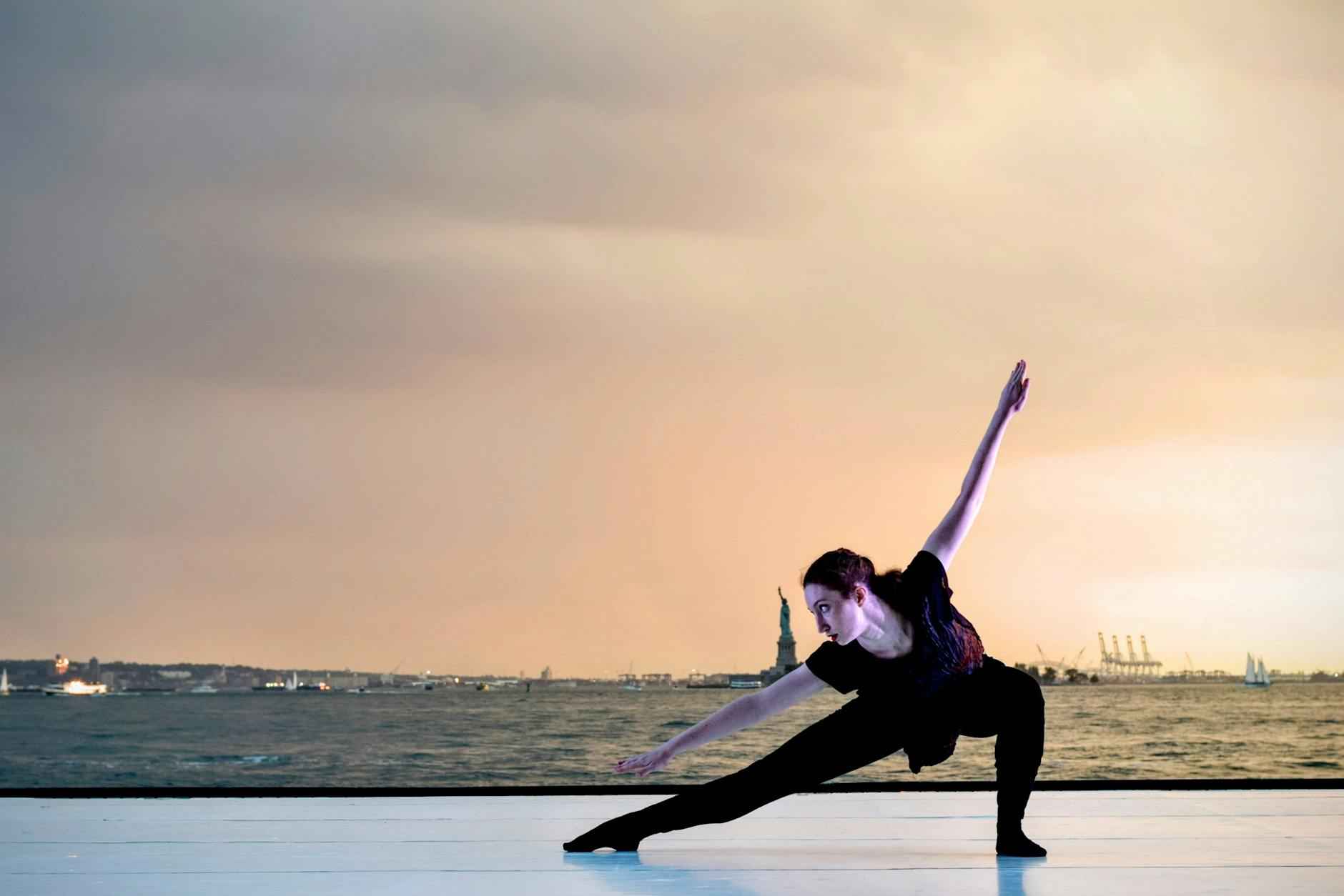
Challenges Faced by Indian Dance Artists
Indian dance artists in New York City contribute significantly to the cultural landscape, yet they encounter numerous challenges that threaten the sustainability of their art forms. This section delves into the primary obstacles faced by these artists, including funding shortages, intense competition, and the pressing need for greater visibility within the mainstream arts community.
One of the most pressing challenges faced by Indian dance artists is the lack of adequate funding. Many artists rely on grants, sponsorships, and donations to support their performances and projects. However, securing these funds can be a daunting task. Competition for grants is fierce, with numerous artists from various disciplines vying for limited resources. This often leads to a situation where only a few artists receive the financial backing they need to thrive.
Moreover, many Indian dance artists operate as independent contractors or small companies, making it difficult for them to compete with larger arts organizations that have established funding channels. The reliance on community support and local donations can be inconsistent, leaving artists vulnerable during economic downturns. To combat this issue, many artists are advocating for increased visibility and support from arts organizations and government bodies, emphasizing the cultural value and community impact of Indian dance.
New York City is a melting pot of artistic talent, which means that Indian dance artists face stiff competition from a variety of other performance art forms. With a plethora of options available to audiences, including ballet, modern dance, and various international dance styles, Indian dance can struggle to capture attention. This competition is not only from other cultures but also from within the Indian dance community itself, where multiple styles vie for audience interest.
To stand out, artists must continuously innovate and adapt their performances. This often involves blending traditional elements with contemporary styles or collaborating with artists from different backgrounds. While this fusion can lead to exciting new forms of expression, it may also dilute the authenticity of traditional Indian dance, leading to a complex balancing act for artists trying to maintain their cultural heritage while appealing to modern audiences.
Despite the rich history and cultural significance of Indian dance, these art forms often lack visibility in mainstream arts circles. Many Indian dance performances are relegated to niche festivals or cultural events, limiting their exposure to wider audiences. This lack of representation can perpetuate stereotypes and misunderstandings about Indian culture, making it essential for artists to find platforms that elevate their work.
Efforts to increase visibility include participating in multicultural festivals, collaborating with artists from other disciplines, and utilizing social media to reach broader audiences. However, these initiatives require time, effort, and sometimes additional funding, which can be challenging for artists already stretched thin. By advocating for more inclusion in major arts festivals and public performances, Indian dance artists can work towards greater recognition and appreciation within the broader arts community.
Addressing the challenges faced by Indian dance artists in NYC is crucial for the sustainability of this vibrant cultural heritage. By focusing on securing funding, navigating competition, and increasing visibility, artists can create a more supportive environment for Indian dance in the city. Community engagement, collaboration, and advocacy are essential in overcoming these hurdles and ensuring that Indian dance continues to thrive in New York City.
Funding and Support for Artists
Securing funding for performances and projects is a common challenge for Indian dance artists in New York City. The vibrant landscape of Indian dance is not only an expression of rich cultural heritage but also a platform for community engagement and artistic exploration. However, the journey of an Indian dance artist often involves navigating the complexities of funding, which is crucial for sustaining their artistic endeavors.
- The Importance of Grants: Grants from cultural organizations play a significant role in providing financial support to artists. These grants are essential for covering the costs of production, costumes, and venue rentals. Organizations such as the National Endowment for the Arts and local arts councils often have specific funding opportunities aimed at supporting diverse art forms, including Indian dance.
- Community Support and Crowdfunding: Community involvement is vital for Indian dance artists. Many artists turn to crowdfunding platforms like Kickstarter or Indiegogo to raise funds for specific projects. Engaging the community not only helps in securing financial resources but also fosters a deeper connection between artists and their audiences.
- Corporate Sponsorships: Another avenue for funding is through corporate sponsorships. Many businesses recognize the value of supporting the arts as part of their corporate social responsibility initiatives. Indian dance performances can provide companies with visibility and demonstrate their commitment to cultural diversity.
- Workshops and Classes: Offering workshops and classes is a practical way for artists to generate income. By teaching traditional dance forms to interested individuals, artists can create a sustainable revenue stream while promoting cultural awareness. These classes can be tailored to various age groups and skill levels, making them accessible to a wider audience.
Moreover, the challenge of securing funding is exacerbated by the competitive nature of the arts scene in NYC. With numerous artists vying for limited resources, it becomes imperative for Indian dance artists to highlight their unique contributions to the cultural tapestry of the city.
Building a Network: Networking plays a crucial role in securing funding and support. Artists can benefit from connecting with other dancers, choreographers, and cultural organizations. Collaborations can lead to joint funding applications and shared resources, creating a stronger community of support.
Visibility and Promotion: Increasing visibility through social media and digital marketing is essential for attracting potential funders. By showcasing their work online, artists can reach a broader audience and demonstrate the impact of their art. Engaging storytelling through videos and posts can help potential supporters understand the importance of their contributions.
In conclusion, while funding remains a significant challenge for Indian dance artists in New York City, various avenues such as grants, community support, corporate sponsorships, and educational initiatives can help sustain their artistic pursuits. By building networks and increasing visibility, these artists can navigate the complexities of funding and continue to thrive in the vibrant cultural landscape of NYC.
Visibility in the Arts Community
In the vibrant tapestry of New York City’s arts scene, Indian dance forms often find themselves in the shadows compared to their more mainstream counterparts. Despite the rich history and cultural significance of these dances, they struggle to gain the visibility they deserve. This article examines the factors contributing to this challenge and explores potential pathways to enhance the representation of Indian dance in NYC.
Indian dance encompasses a variety of styles, each with its unique narrative and cultural roots. However, the lack of visibility in the arts community can be attributed to several factors. One primary issue is the competition with other art forms. In a city bustling with diverse artistic expressions, Indian dance often competes against more widely recognized genres such as ballet, contemporary dance, and hip-hop. This competition can overshadow the intricate beauty and storytelling inherent in Indian dance forms, making it difficult for these artists to reach broader audiences.
Furthermore, the representation of Indian dance in festivals and showcases is limited. Many cultural festivals in NYC feature a range of artistic expressions, but Indian dance performances are often relegated to a smaller segment of the programming. This limited exposure can hinder the growth of appreciation for these art forms, as audiences may not have the opportunity to experience them in a prominent setting. Increased representation in major festivals can significantly elevate the visibility of Indian dance, allowing it to stand alongside other celebrated art forms.
Moreover, the promotion of Indian dance through digital platforms remains underutilized. While many artists have embraced social media to share their work, the overall visibility of Indian dance in the digital space is still lacking. By leveraging platforms like Instagram, YouTube, and TikTok, dancers can showcase their performances to a global audience, thereby increasing interest and engagement. This digital presence can also attract younger generations, who are more inclined to explore diverse art forms through online content.
Community engagement plays a crucial role in enhancing visibility as well. Workshops, community classes, and collaborative performances can foster a deeper understanding of Indian dance among diverse audiences. By inviting individuals from various backgrounds to participate in these activities, Indian dance can demystify its cultural significance and build a supportive community that champions its visibility in the arts.
To address these challenges, it is essential for Indian dance artists and organizations to actively seek partnerships with larger arts institutions. Collaborations can create opportunities for Indian dance to be featured in prominent venues, thereby enhancing its visibility. Furthermore, securing funding for projects and performances can help sustain these art forms and provide them with the resources needed to thrive in the competitive arts landscape of NYC.
In conclusion, while Indian dance forms face significant challenges in achieving visibility within the arts community of New York City, there are numerous pathways to elevate these traditions. By increasing representation in festivals, leveraging digital platforms, and fostering community engagement, the rich cultural heritage of Indian dance can gain the recognition it deserves, attracting wider audiences and ensuring its continued relevance in the ever-evolving arts scene.

The Future of Indian Dance in NYC
is a topic that resonates deeply with both practitioners and enthusiasts of this rich cultural art form. As the cultural landscape of New York City continues to evolve, so does the presence and appreciation of Indian dance. This article delves into the promising trajectory of Indian dance in NYC, examining the factors that contribute to its growth, the challenges it faces, and the community’s role in ensuring its sustainability.
In recent years, there has been a noticeable increase in interest in Indian dance forms among both the Indian diaspora and the broader New York City community. This surge can be attributed to various factors, including the rise of Bollywood films, which have popularized dance styles like Bollywood and Kathak, making them more accessible and appealing to a younger audience. Dance schools across the city have reported higher enrollment numbers, with students eager to learn traditional forms such as Bharatanatyam and Odissi.
Moreover, community events and cultural festivals play a vital role in fostering this interest. Events like the India Day Parade and Diwali celebrations often feature vibrant dance performances, captivating audiences and encouraging participation. These platforms not only showcase the beauty of Indian dance but also promote cultural exchange, inviting people from different backgrounds to engage with this art form.
The sustainability of Indian dance in NYC heavily relies on the continued support from local communities and cultural organizations. Numerous non-profits and cultural institutions are dedicated to promoting Indian arts, providing funding, resources, and performance opportunities for artists. Initiatives such as workshops, masterclasses, and collaborative performances help bridge the gap between traditional and contemporary styles, ensuring that Indian dance remains relevant in today’s fast-paced world.
Furthermore, partnerships between Indian dance schools and cultural organizations enhance visibility and accessibility. For instance, collaborations with schools and universities can introduce Indian dance to a wider audience, fostering appreciation among students who may not have been exposed to these art forms otherwise. This community-driven approach not only nurtures talent but also reinforces the cultural fabric of New York City.
Despite the promising outlook, Indian dance artists in NYC face several challenges that could hinder their growth. Funding remains a significant issue, as many artists struggle to secure financial support for their projects. Grants from arts organizations and community-based funding initiatives are essential for sustaining their artistic endeavors. Additionally, the competition within the arts community can be fierce, with many artists vying for limited performance opportunities.
However, these challenges also present opportunities for innovation and collaboration. Artists are increasingly exploring fusion styles, blending traditional Indian dance with contemporary genres, which attracts new audiences and keeps the art form dynamic. This evolution not only broadens the appeal of Indian dance but also encourages artists to think creatively about their craft, pushing the boundaries of traditional forms.
In the digital age, technology plays a crucial role in the promotion and dissemination of Indian dance. Social media platforms such as Instagram and YouTube have become vital tools for artists to showcase their work, connect with audiences, and share their passion for dance. Virtual performances and online classes have made Indian dance more accessible, allowing individuals from around the world to engage with these art forms.
Moreover, technology facilitates collaboration between artists across geographical boundaries. Online workshops and virtual festivals enable dancers to connect and learn from one another, fostering a sense of community that transcends physical limitations. This digital engagement not only promotes Indian dance but also opens up avenues for cultural exchange, enriching the experience for both performers and audiences.
As we look towards the future, the potential for Indian dance in New York City is vast. With growing interest, community support, and the innovative use of technology, Indian dance is poised to thrive in this vibrant metropolis. The commitment of artists, cultural organizations, and the community at large will be essential in ensuring that these rich traditions continue to flourish and evolve in the years to come.
Emerging Trends in Indian Dance
The landscape of Indian dance in New York City is undergoing a remarkable transformation, driven by a blend of tradition and innovation. As cultural exchanges become more prominent, the fusion of Indian dance with contemporary styles is emerging as a significant trend. This evolution not only revitalizes traditional forms but also attracts a younger audience, ensuring the relevance of this rich art form in a modern context.
- Fusion of Styles: One of the most exciting trends is the integration of classical Indian dance with contemporary genres such as hip-hop, jazz, and modern dance. This fusion creates a dynamic performance style that resonates with younger audiences who may not have a traditional background in Indian dance.
- Collaborative Projects: Artists are increasingly collaborating with dancers from different cultural backgrounds, leading to innovative performances that celebrate diversity. These partnerships often result in unique choreographies that blend various dance languages, enriching the overall experience for audiences.
- Use of Technology: The rise of social media and digital platforms has revolutionized how Indian dance is promoted and consumed. Dancers are utilizing platforms like Instagram, TikTok, and YouTube to showcase their talent, reach wider audiences, and engage with fans. Virtual performances and online classes have also made Indian dance more accessible, breaking geographical barriers.
The fusion of traditional Indian dance with contemporary styles is particularly appealing to younger generations. For instance, choreographers are experimenting with Bollywood dance, incorporating elements of street dance and urban choreography. This not only makes the performances more relatable but also introduces traditional dance forms to those who might be unfamiliar with them. Dance studios in NYC are responding to this trend by offering classes that blend these styles, allowing students to explore the richness of Indian dance while also engaging with modern techniques.
Moreover, the incorporation of technology into the promotion of Indian dance is a game-changer. Dancers are now able to reach global audiences through online platforms, enabling them to share their art with people who may not have the opportunity to attend live performances. This digital presence is crucial for the sustainability of Indian dance forms, as it fosters a sense of community and encourages cultural exchange. Virtual workshops and online tutorials are also becoming popular, allowing individuals to learn and appreciate the intricacies of Indian dance from the comfort of their homes.
In addition to these trends, the cultural significance of Indian dance remains a strong foundation for its evolution. Performances often convey stories that resonate with contemporary issues, allowing artists to express their perspectives on social themes. By addressing relevant topics through dance, artists can engage audiences on a deeper level, fostering a greater appreciation for the art form.
As Indian dance continues to evolve in New York City, it is clear that these emerging trends are not just fleeting fads but rather essential components of a vibrant and thriving dance community. The fusion of styles, collaborative projects, and the strategic use of technology are all contributing to the revitalization of Indian dance, ensuring its relevance for future generations. This ongoing transformation serves as a reminder of the adaptability and resilience of cultural expressions, allowing them to flourish in an ever-changing world.
Role of Technology in Promotion
Technology has revolutionized the way art forms, including Indian dance, are promoted and disseminated. In a bustling metropolis like New York City, the impact of technology on Indian dance is particularly pronounced, fostering a vibrant community that transcends geographical boundaries. This article delves into how technology, particularly through social media and online platforms, has become a pivotal tool in promoting Indian dance, making it more accessible and engaging for audiences worldwide.
The Rise of Social Media in Indian Dance Promotion
Social media platforms such as Facebook, Instagram, and YouTube have emerged as essential tools for Indian dance artists and organizations. These platforms allow dancers to share their performances, tutorials, and behind-the-scenes content with a global audience. The visual nature of these platforms is particularly beneficial for dance, as it allows users to experience the artistry and emotion of performances in real-time.
- Engagement with the Audience: Dancers can interact with their audience directly through comments, likes, and shares. This interaction fosters a sense of community and encourages feedback, making performances more dynamic.
- Viral Trends: Social media can help dance performances go viral, reaching audiences far beyond traditional venues. For instance, a well-choreographed Bollywood dance video can garner millions of views, introducing viewers to Indian dance.
- Collaborative Opportunities: Dancers can connect with other artists, choreographers, and influencers, leading to collaborative projects that blend various styles and cultures.
Online Dance Tutorials and Classes
The availability of online dance tutorials has democratized the learning process for Indian dance forms. Platforms like YouTube and specialized dance websites offer free or affordable access to dance lessons, enabling anyone with an internet connection to learn. This accessibility is crucial for those who may not have access to traditional dance schools.
- Wide Range of Styles: Online resources cover various Indian dance styles, from Bharatanatyam to Kathak and even contemporary Bollywood dance. This diversity allows learners to explore different forms and find their passion.
- Flexible Learning: Online tutorials provide the flexibility to learn at one’s own pace, catering to different schedules and learning styles. This flexibility is particularly appealing for busy professionals and students.
- Global Reach: Aspiring dancers from across the globe can access Indian dance tutorials, fostering a greater appreciation for this rich cultural heritage. This global reach contributes to the spread of Indian dance, creating a more extensive network of enthusiasts.
Virtual Performances and Events
The COVID-19 pandemic accelerated the shift towards virtual performances, and Indian dance has embraced this change. Many dance companies and individual artists have turned to live streaming platforms to showcase their work, reaching audiences who may not have been able to attend in-person events.
- Accessibility: Virtual performances break down geographical barriers, allowing people from different parts of the world to experience Indian dance. This accessibility is particularly important for diasporic communities seeking to connect with their roots.
- Innovative Formats: Artists have experimented with new formats, combining traditional performances with multimedia elements, such as projections and digital backdrops, enhancing the overall experience.
- Engagement through Interactivity: Some virtual performances incorporate interactive elements, such as Q&A sessions or audience participation, making the experience more engaging and personal.
Challenges and Opportunities
While technology offers numerous advantages for promoting Indian dance, it also presents challenges. The oversaturation of content on social media can make it difficult for individual artists to stand out. However, those who leverage technology effectively can create unique identities and build loyal followings.
In conclusion, technology plays a crucial role in promoting Indian dance, making it more accessible to a global audience. Through social media, online tutorials, and virtual performances, artists can share their passion and artistry, fostering a vibrant and engaged community. As technology continues to evolve, it will undoubtedly open new avenues for Indian dance, ensuring its relevance and growth in the modern world.

